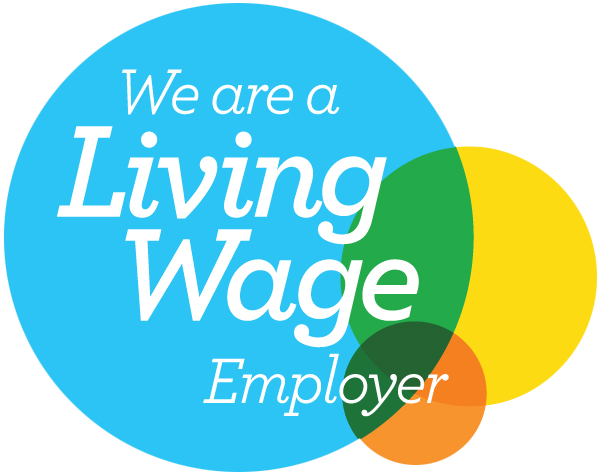
According to the Institute of Occupational Safety and Health, half of employers are ‘wellbeing washing’ – talking about the importance of wellbeing but failing to provide employees with the corresponding tangible benefits. We outline the insights from our session that can help you facilitate a culture of support for staff.
Ahead of our webinar, we ran a short online survey to capture the current approach to wellbeing. We received 63 responses, with 75 per cent having over 100 employees across a wide range of sectors from health to construction. The most popular wellbeing policy in place was targeted at Mental Health (nearly 75 per cent), followed by work-related stress and the menopause.
Domestic abuse and fatigue were also among the most common work-related policies that outlined the support on offer for employees facing these challenges in their personal lives. Knowing that these policies are offered not only gives employees a resource when they are struggling with these issues, but it also goes a long way to de-stigmatising these issues as there is a policy in place for line managers to have open conversations focused on championing the wellbeing of the individual.
Nearly 100 per cent of respondents offer an Employee Assistance Programme. These are designed to provide teams with support and practical advice on issues that might have an impact on their wellbeing and performance at work. This was followed by 80 per cent offering mental health wellbeing webinars and workshops to raise awareness of how to manage mental health challenges, or support colleagues if they struggle.
In recognition that wellbeing is not only physical and mental, financial wellbeing is increasingly supported by organisations, especially during the cost of living crisis. Webinars and workshops can help employees better manage their finances and alleviate stress in this area. This is complemented by other support tools such as salary advances, interest-free loans and staff emergency/hardship funds.
Benefits play a huge part in enabling people to identify what they value the most. We are increasingly asked for Total Reward Statements to capture the breadth of benefits on offer and monitor the uptake of benefits that support physical, mental and financial wellbeing. Total Reward Statements enable employees to understand the wider investment their employer makes in them beyond pay.
The number of Mental Health First Aiders (MHFA) in organisations varied from two to 100 within the respondent employers in our survey. The mean was 18, with many employers adopting a team strategy to ensure that there is a MHFA available that colleagues work closely with. When it comes to senior leadership however, only up to 10 per cent of leaders are MHFA trained. Securing senior leadership MHFAs is an important way to signal to the wider business that mental health wellbeing is prioritised for the organisation.
The majority of employers include wellbeing questions in wider employee engagement surveys to monitor employee wellbeing. Work-related stress risk assessments are used by just under half of respondents. However, regular, dedicated wellbeing surveys to ‘take the temperature’ of employees are less common, with only around one in five running these. A similar number use MHFA tracking tools, to anonymously monitor the number and nature of conversations and identify general concerns to target support where and when it is required.
While reporting is common for organisations, with around half of organisations monitoring these results at Management Meetings and one third monitoring this at Board level, participation in Mind’s Workplace Wellbeing Index is less common, with only seven per cent taking part. This raises concerns about the quality and accuracy of reporting.
Wendy Palmer, HSE Sales Executive at The Stationery Office, the HSE’s partner for publications and products, joined our webinar to outline the HSE Stress Indicator Tool (SIT). The SIT is an online survey based on the HSE’s Management Standards, helping employers identify risk factors and understand causes and prevention. This helps organisations gauge how well they are tackling the key drivers of stress on an anonymous basis through 35 pre-set questions.
Head of Workplace Wellbeing for BAM, Ruth Pott, shared the approach to workplace wellbeing for the leading construction and property services company. Since starting their wellbeing journey in 2016, BAM has developed a robust workplace wellbeing strategy – one that pushes the boundaries and supports sustainable change.
With 7000 employees in the UK and Ireland, and 15,000 in the wider Group, it was important to highlight the prevalence of mental health challenges in wider society as one in four people reportedly struggle with their mental health according to Mind. 11 per 100,000 commit suicide in the UK each year (which is doubled in the construction industry). These figures could potentially be reduced with a greater focus on wellbeing and the individual.
The first step was to make a compelling case for change. The company’s commitment to build infrastructure for the future that enhances people’s lives started with the people that worked for them. Their busines case centred on the following points:
BAM factored in the cost to the company’s bottom line, with a Deloitte report in 2022 estimating a £1,652 cost per employee for poor wellbeing (covering absenteeism, presenteeism, staff turnover costs, reduced performance, and accidents); and finding a return of £5 for every £1 invested in mental health support for employees.
There was also the associated medical insurance costs for mental health and muscular skeletal ill health to consider. The direct costs for muscular skeletal ill health claims were around £700k and mental health claims around £163k, highlighting the importance of physical wellbeing.
The demographic of the workforce in construction is traditionally male dominated, posing a particular challenge around breaking down any stigma around men’s mental health and encouraging greater transparency. This reflects the global challenges facing the construction industry around wellbeing, with 23 per cent of all deaths reportedly preventable through healthier environments according to the World Health Organisation.
BAM considered the preventative measures they could put in place. For a relatively small investment, they have moved furniture around to different sites and offices to create ‘wellbeing rooms’ in various spaces that they have adapted. Here teams are provided with a safe space to talk and it has been a real success.
Anonymised monitoring by the Safety Adviser about how the rooms have been used have highlighted how people have shared their personal concerns and challenges with wellbeing champions, their MHFA. Trials have proved very successful with the breadth and complexity of issues being shared to access the right support. Making people feel comfortable to share this was key.
Flexible working and improving work/life balance for all is important to employees, alongside continuous access to training for all. Mental health training is provided to all managers and included in induction and health and safety programmes, to ensure support is offered at all levels of seniority, alongside mandatory e-learning modules, including a suicide awareness training module. Loneliness can affect everyone, so wellbeing programmes are comprehensive in tackling these issues too, with onsite counselling offered where required.
An annual BAM Safety and Wellbeing Day also raises awareness of conversation starters to equip individuals with how they can protect their safety and wellbeing at work. Specialist groups and forums advocate self-help and helping others, so that teams can support one another. More than one third of the business was directly supported last year by wellbeing activities and policies at BAM which is reported to the Board.
BAM have mapped out inclusion opportunities at every stage of an employee journey – from fertility journeys to being new parents, to being peri-menopausal and caring for elderly parents. Being aware of the challenges potentially facing every employee at various stages and tailoring support can help BAM keep people at the core of their strategy in order for them to be an inclusive employer.
BAM aim to reduce problems associated with physical wellbeing by getting people moving more and ensuring they are aware of the health risks of muscular skeletal injuries and work-related stress. Education around healthier habits and using CBT to lead to sustainable behaviour change can help embed an effective wellbeing approach. They continue to push boundaries in raising awareness of risks to employee health, including addiction to gambling and pornography, all with the individual impact in mind.
We hope this snapshot of our fascinating discussion about the tools and resources that can improve people’s lives inspires new ideas for your organisation.

Managing Director
Tim is a passionate HR specialist with over 20 years’ experience in pay and reward. As a director of Paydata, Tim has worked with thousands of satis...
23 March 2023
Inflation 10.4% February 2023 Employment 32.8M up...
2 March 2023
On 23 February, Employee Benefits Consultant Deb Sussex joined us to discuss how the employee benefi...
23 February 2023
The war for talent remains widespread – not only in terms of the skills shortage being experienced...
Sign up for briefings on pay benchmarking, salary surveys, reward strategy and statistical updates.
sign up for updates
© Paydata Ltd 2025 All rights reserved.
Registered in England no: 3632206
VAT no: 728 0808 28
Paydata Ltd, 24 Commerce Road, Lynch Wood, Peterborough, Cambridgeshire, PE2 6LR

